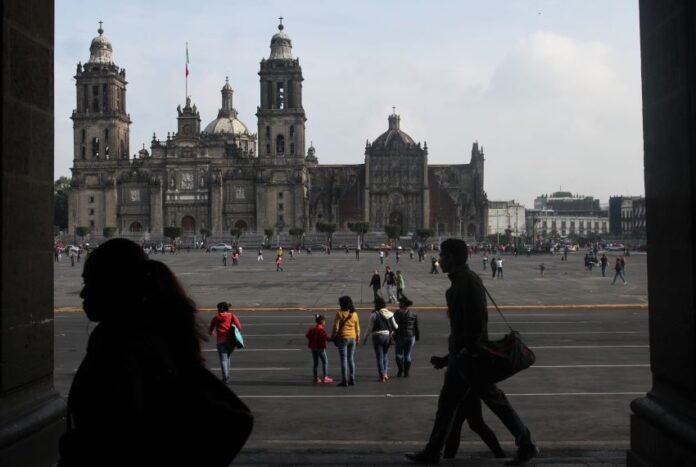The long-running National Coordinator of Education Workers (CNTE) protest in Mexico City’s historic center came to an end on Sunday after 23 days.
The CNTE removed its tents and signs from the Zócalo and surrounding streets over the weekend, and by Monday, the main square had returned to business as usual.
🗣️En el plantón que mantiene la CNTE en el Zócalo, hay puntos que comienzan a liberarse, profesores recogen sus lonas, carpas y casas de campaña.
Este movimiento es más visible en la calle 20 de Noviembre previo a ingresar a la plancha, donde los profes ya tienen la mayor parte… pic.twitter.com/9eDQ3T439Q
— Uno TV (@UnoNoticias) June 6, 2025
The Zócalo/Tenochtitlan metro station also reopened its access points on Sunday afternoon after being closed for almost one month.
Members of the CNTE launched protests as part of a national strike on May 15, demanding changes to working and educational conditions. Union members were specifically calling for the repeal of the 2007 ISSSTE Law, which changed the federal pension scheme from pooled to individual, and which President Sheinbaum previously pledged to reverse.
In addition, teachers are mobilizing for a pay increase of 100%.
On May 15, President Sheinbaum proposed a 10% increase for teachers across the country, which would put the average monthly salary at approximately 19,000 pesos (US $1,000). The CNTE rejected the president’s proposal and intensified their actions to include blockades and attacks on government buildings.
On May 21, members of the CNTE blocked the press entrance to the presidential palace in an attempt to put pressure on Sheinbaum to make good on her campaign promise to repeal the 2007 ISSSTE Law.
Local businesses in Mexico City’s historic center were affected by the disruptions, as restaurants and shops around the square were forced to close. Many began to reopen on Sunday and vendors have now returned to the streets.
Over the weekend, a Mexico City representative of the opposition National Action Party (PAN), Miguel Errasti, called on President Claudia Sheinbaum to launch an emergency economic program to support merchants in the Historic Center who were affected by the protests.
“Business groups report that the CNTE affected more than 30,000 businesses and accumulated losses [have totaled] 25 billion pesos, something the local government tolerated,” Errasti said.
“This is a call for the immediate launch of an emergency economic recovery plan for the Zócalo and Reforma Avenue areas.”
Meanwhile, the CNTE said it plans to continue with local demonstrations until a suitable agreement can be reached with the government.
With reports from El Universal, La Prensa OEM and Sin Embargo
